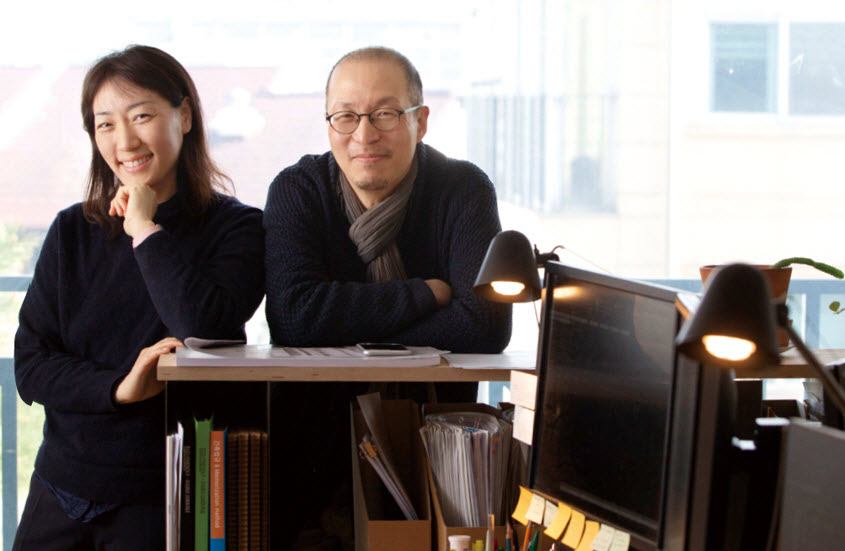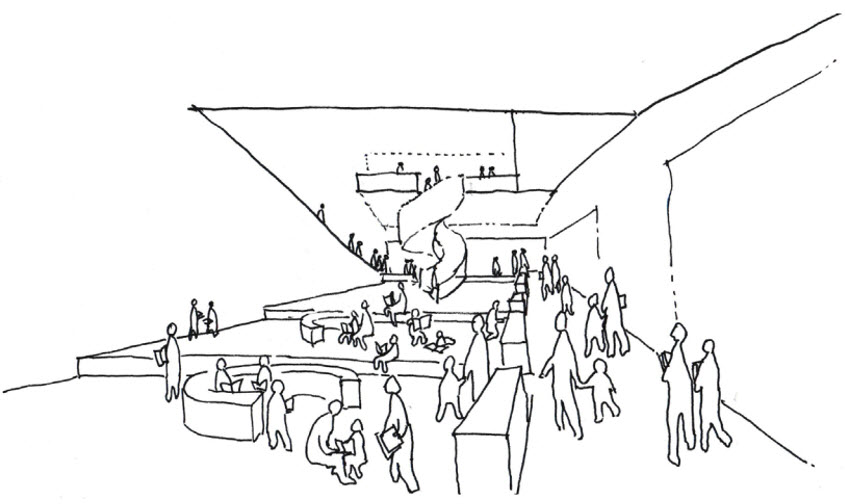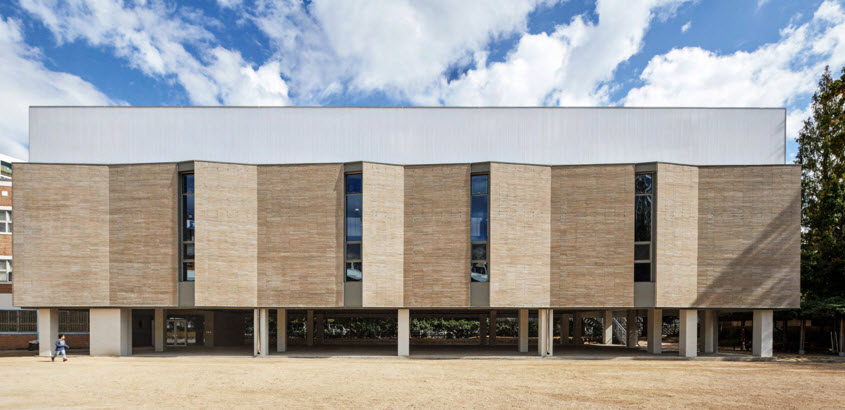
Architect Borim Jun and Seunghwan Lee (Department of Architecture, Class of 95 & 94)
Public architecture refers to the social infrastructure utilized by many people, including the public offices, schools, hospitals and libraries that are commonly found around us. Although providing public services and being closely connected to our daily life, public architecture has uniform appearances and plays the minimum roles. However, public architecture has a critical role in determining the quality of the environment and life in cities and villages. Furthermore, public architecture contributes to the vitalization of cities, serving as a space for the community where people can communicate in various ways. We asked Seunghwan Lee and Borim Jun, the Chief of the IDR Architects, about the direction of the public architecture that is shared by people.
Dreaming of Life-Building Public Architecture
Recalling that we spent most of our childhood in schools, we can easily understand how deeply public architecture is rooted at the center of our life. However, public architecture has always been away from the interests of the public, probably because nobody owns it and anyone can use it. While the public architecture did not draw people’s attention, the logics of economy prevailed to constructed the buildings quickly and cheaply. As a result, all public architectures have become the facilities that have monotonous designs and minimal functions.
Architect Lee and Jun have conducted many public architectural projects and received big prizes many times, including the 2019 Young Architect Award, the Public Building Award, the Korean Architecture Award, the Rising Architect Award, and the Ulsan Architecture Award. Although they won the glorious prizes, they were repeatedly hurt by the irrationality of the public architecture system in Korea, including the poorly written contracts, insufficient design period and cost in comparison with the size, and the design and construction procedures that are changed dozens of times by the interference by many parties. The Ulsan Maegok Library, their first building that gave them many prizes, was far away from the urban areas to the point of feeling shame to call it ‘a public facility.’ In the multi-purpose auditorium project that followed, their most important ideas happened to be switched.
“Many people think that the buildings constructed by using the tax must be constructed efficiently. Despite the many innovations in the society, the performance indexes applied to the public agencies are still based on the monetary values. The purpose of the indexes is to give a sufficient amount of time and expenditure to appropriate and capable architects within the fixed budget to build suitable and proper buildings, but the evaluation procedures are based on the numerical values.” (Lee)

A sketch of the reading room of the Maegok Library. Architect Lee and Jun designed the library to combine the general reading room and the children’s reading room so that families can read books together.
Functions of Public Architecture Taken Away by Locations and Complexation
About the conditions of good public architecture, Architect Jun says that the locations should be changed firstly. Although the design in consideration of the users and the honest and sincere construction are important, location is more critical to the convenience and benefits of the citizens than any other factors. The old and small administrative offices have been replaced by new buildings in the cheaper outskirt areas, and the libraries and sports centers, which should be near to the citizens, have been constructed in remote areas. In this way, the public architecture has long been at a standstill.
“The community facilities that should be available to all have moved into apartment complexes or buildings. Everything is inside the buildings, and thus the city landscape is simple. The apartment complexes are classified into different grades, accelerating the stratification of the society. If community facilities need to be composite, they should be placed not inside but outside a building so that the complexation may occur in the greater scale, the scale of an entire city.” (Lee)
“In that sense, the Gwanak Campus of SNU has deficiencies as well. The spaces should be connected with the walkways to make communications, but there are too many roads for vehicles and the community facilities are distant from the places that are frequently used by the students. I hope that the campus can be improved such that the connected elements may function fully, including the spaces between buildings, ways, squares and the building spaces linked with the ways.” (Jun)
The values of public architecture must be maintained even during the pandemic.
In the post COVID-19 period, the spaces of physical activities and social communications, such as parks and libraries, have become those that should be avoided during the pandemic. The pandemic also affected the two persons who have worked in the field of public architecture for a long time. They said, “Personal spaces are gaining more importance, but the values of public architecture should be maintained continuously, allowing everyone to enjoy the senses of space equally.” Such attempts are actually made in other countries. For example, in the Domino Park in Williamsburg, Brooklyn, New York, circles of a diameter of about 2.4 m are drawn with a white line on the waterfront lawn to let the visitors enjoy picnic within the circles. It is the application of social distancing to the park design.
“Carefully avoiding the infection is important, but it is not appropriate to focus only on the infection issues in preparing the social system. Other variables of social distancing, such as dying alone and neglecting children, should be taken into consideration from a wider viewpoint. In addition, the COVID-19 is inseparable from the environmental issues, what is more important than reducing the contact with other people is reducing the range of our activities. Instead of being obsessed with how to rapidly travel a long distance while causing environmental pollutions, we need to think about how solve problems without physical migration, such as online conferencing or shared offices. In that sense, the roles of public architecture are indispensable.” (Jun)

Multi-purpose audience for an elementary school. The outer appearance, inspired by paper folding, controls the natural solar light coming into the gymnasium, giving vitality to the space.
A City of Our Dream
Architect Lee and Jun graduated from the Department of Landscape Architecture and the Department of Sculpture, respectively, transferred to the Department of Architecture. Architect Lee was greatly affected by his father who earlier graduated from the Department of Architecture. Architect Jun chose architecture because she acquired interests in architectures and cities through travel experiences and was attracted more by practical works rather than fine arts. Recalling the design classes in the university, they had nothing common about the design; they used to submit design proposals that were extremely different under the same design conditions. However, they share the idea that a good public architecture can change the life. That’s why they publish articles through their blogs and SNS to criticize the irrational practices of public architecture. They have been complained by public agencies and their contracts have been rejected because of their open speech. Nevertheless, they do not tone down in order to vitalize the cities with better public architectures. They hope that the solidarity of people created through the public architecture can connect people together and make them happier.
“I want to keep the values that I had when I firstly started architecture. Just as small steps, gathered together, can make a big change, I’m looking forward to seeing our good buildings gradually changing our cities and lives. Above all, I want to continuously work in the field of architecture without being tired.” (Lee)

